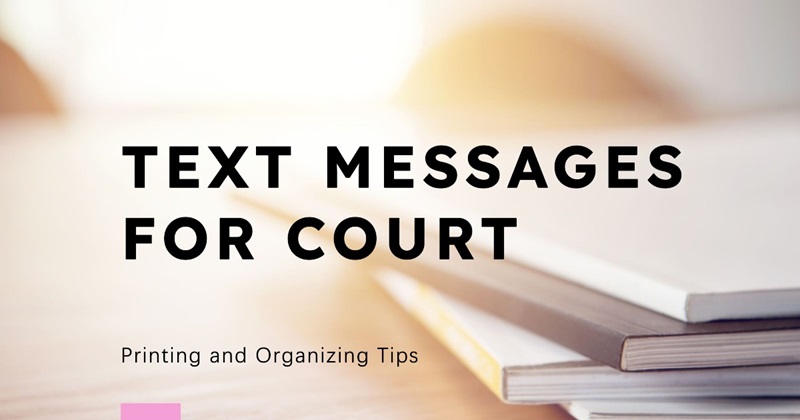Last Updated on November 26, 2024 by jadigital.net
Printing text messages for court involves ensuring that the messages are presented in a format that is acceptable as evidence, while also adhering to legal standards for authenticity and relevance. This guide outlines a step-by-step process to help you effectively print text messages for use in legal proceedings.
1. Understand the Legal Requirements
Before printing text messages for court, familiarize yourself with the legal requirements specific to your jurisdiction. Requirements can vary, but generally, the evidence must be relevant to the case, authentic, obtained legally, and preserved in a way that prevents tampering or alteration.
2. Preserve the Integrity of the Messages
It is crucial to maintain the integrity of the text messages. Do not edit or alter the messages in any way. Ensure that the messages include necessary metadata such as the date and time stamp, sender and recipient information, and the content of the messages themselves.
3. Capture Screenshots
One common method to preserve text messages is by taking screenshots. This method captures the messages exactly as they appear on the device. Ensure each screenshot includes the entire conversation thread and the phone number or contact name, as well as time and date information.
4. Use Specialized Software
For a more thorough approach, consider using specialized software designed to extract text messages from smartphones. Software solutions like Decipher TextMessage, PhoneView, or Dr.Fone can export messages in a format that includes all pertinent metadata. These tools often provide options to print the messages directly from the application, ensuring that the printouts are clear and well-organized.
5. Prepare Printouts
When printing text messages, include all relevant metadata. Printouts should clearly show:
- The names or phone numbers of the sender and recipient
- The date and time of each message
- The message content Ensure the printouts are legible, with no cut-off texts or obscured information.
6. Create a Detailed Affidavit
Prepare an affidavit to accompany the printed text messages. The affidavit should be sworn by the person who extracted the messages, attesting to the accuracy and authenticity of the printouts. The affidavit should state how the messages were obtained, how they were preserved, and that they are true and complete copies of the original digital conversations.
7. Consult Legal Advice
Before submitting any evidence to the court, consult with a legal professional. They can provide guidance tailored to your case and jurisdiction, ensuring that your evidence complies with legal standards and is presented effectively.
8. Consider Privacy and Ethical Implications
Always consider the privacy and ethical implications of using text messages as evidence. Ensure that the messages pertain directly to the case and that their use complies with privacy laws and regulations.
9. Keep Backup Copies
Maintain backup copies of all digital messages and printouts in case they are needed for verification or if the original documents are lost or damaged.
10. Prepare for Presentation in Court
Organize the printed text messages in a manner that makes them easy to reference during court proceedings. Use a binder or folder to keep the documents in order and consider using tabs to mark important sections or dates.
By following these steps, you can ensure that text messages are printed and presented in court in a manner that upholds their evidential value and meets legal standards. Proper preparation and presentation of text messages can be crucial in supporting your case effectively in court.
